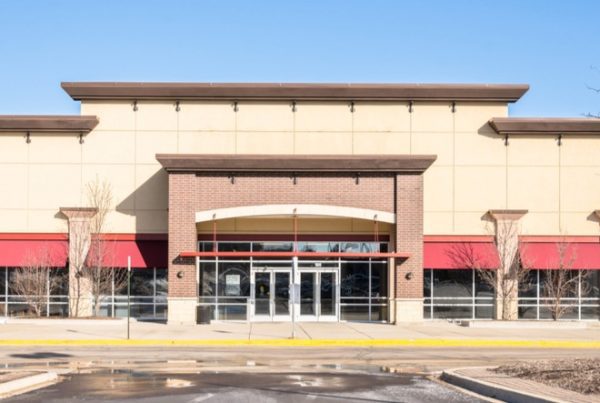
Any retailer considering expanding into a new market or adding locations in a market in which they already operate relies heavily on demographic data. Retail chains go to great lengths to understand as much as possible about their customers and prospective customers—the people who live and work in the areas where they are considering opening a new location.
For SiteSeer subscribers seeking a quality, cost-effective dataset, our data partner, Applied Geographic Solutions, offers a comprehensive solution.
We sat down with AGS founder and president, Gary Menger, to learn more about the company’s roots, broad spectrum of data offerings, and how SiteSeer users can put AGS data to work in their site selection and market analysis processes.
Give SiteSeer readers a high-level introduction to AGS demographic data.
We supply demographic databases to companies striving to make accurate, timely market decisions. We use a wide range of public and private data sources to compile and model that data to create a series of current estimates and five-year projections or a broad range of demographic characteristics.
How did your company come to fruition?
I was earning a doctoral degree in geography at the University of Toronto, planning to become a geography professor, when I had the opportunity to build demographic data and site location models for Compusearch. I moved to Los Angeles to join Urban Decision Systems in the early 1990s to re-engineer their software and production system and expand their data offerings. The company grew substantially and was acquired by Claritas in 1996. They promptly shut the company down, so I went back to my roots and started Applied Geographic Solutions. Our first product was Freeway—the very first (and still popular) commercially available drive time/isochrone generator. We also began building and refining our core estimates and projections dataset.
Tell us about the Estimates & Projections database.
The Estimates and Projections database (E&P) is our core offering that includes nearly 1,000 variables covering the demographic basics: population, household, dwelling, labor force, and income characteristics. While still heavily based on the latest Census and American Community Surveys (ACS), our data team of five highly experienced professionals applies sophisticated spatial analysis techniques and integrates many other public and private data sources to enhance and refine that data. The result is the most accurate demographic estimates and projections possible.
What other data products does AGS offer?
We offer a broad range of demographic data, and over the years, we’ve constructed other databases based on demand from partners like SiteSeer. Our CrimeRisk data provides a view of the relative risk of specific crime types for different geographic areas. Panorama is a geodemographic segmentation that provides a simple but powerful analytics platform when paired with the MRI-Simmons consumer study. We have BusinessCounts, a geographic summary database of business establishments and employees for ~10 million businesses, Non-Resident Population data that estimates the often overlooked overnight population of business and leisure travelers in multiple categories, Consumer Expenditures data that covers over 390 categories, and Retail Potential data that estimates potential by retail store type. And this only scratches the surface of our data content, which at this point consists of over 50,000 attributes for the United States and 3,000 for Canada. Soon, we’ll have several hundred attributes for Mexico.
What sets AGS data apart?
The quality and content of our datasets. Our data team puts enormous effort into making them the best they can be. Starting with a Census/ACS base, we then use a wide range of public and private sources to create current estimates and five-year projections. While we release every six months, we build our databases continuously. No data is without error, but we have a have a very thorough process we’ve developed over 30 years to enhance the usability and accuracy of the databases we develop.
The second thing that sets AGS apart is our deep experience in the industry. We have been in the trenches of retail modeling and site selection for decades. Because we’re not just creators of data but also users of data, we’re able to support and advise our end users. And we don’t charge for advice.
Anything new going on with AGS data or big initiatives to share?
Our current efforts are to revolutionize small area demographics by creating and integrating micro-geographic datasets that will allow us to identify new dwellings during the planning and construction phases. Our HotBlocks project identifies areas where change is underway and where it is likely within the next couple of years by compiling and tracking changes in parcels, land use, building permits, postal addresses, street maps, and infrastructure projects.
How can SiteSeer’s retail users benefit from AGS data?
Retailers today must be strategic and smart, and SiteSeer helps them analyze markets and sites to make the best decisions. Of course, this analysis requires quality, reliable data about the demographic makeup, crime risk, and demand for services and products in an area. No matter what kind of retailer you are, we have data that is specific to your needs. We have data products to help retailers analyze locations and markets, but we also have data to help them optimize sales.
And how about SiteSeer’s commercial real estate professionals? How can they use AGS datasets to enhance their analysis?
Brokers and developers who use SiteSeer’s suite of tools to fill vacancies and lease their shopping centers need data to help them recruit the retail right tenants. That includes demographic and consumer spending data that retailers use in their own analysis, but also data that will help them craft the right story to market their listings effectively.
To learn more about AGS, their methodology, and their suite of product offerings, visit appliedgeographic.com. Questions about AGS data and how to incorporate it into the SiteSeer platform? Contact us!


